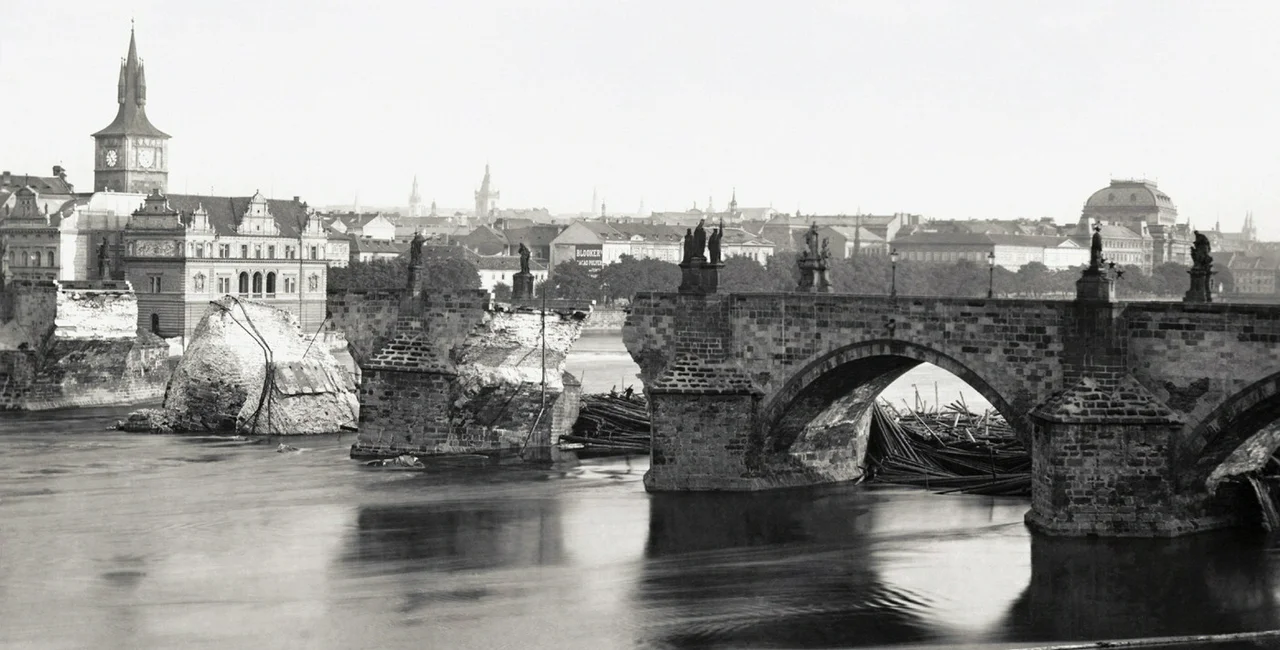Most people remember the “500 year flood” of 2002 as being the worst in Prague’s history, but there were many others that also caused damage.
A somewhat forgotten flood in early September 1890 actually knocked down part of Charles Bridge. Worse, some people at the time saw it as an opportunity to replace part of the centuries-old stone structure with something sturdier and more modern.
An artillery shot at 4 am on September 3, 1890, warned the city’s people that flooding was imminent, with water was two meters above normal. Logs, broken rafts and other debris got stuck on the pillars of Charles Bridge, and served to amplify the force of the rushing water.
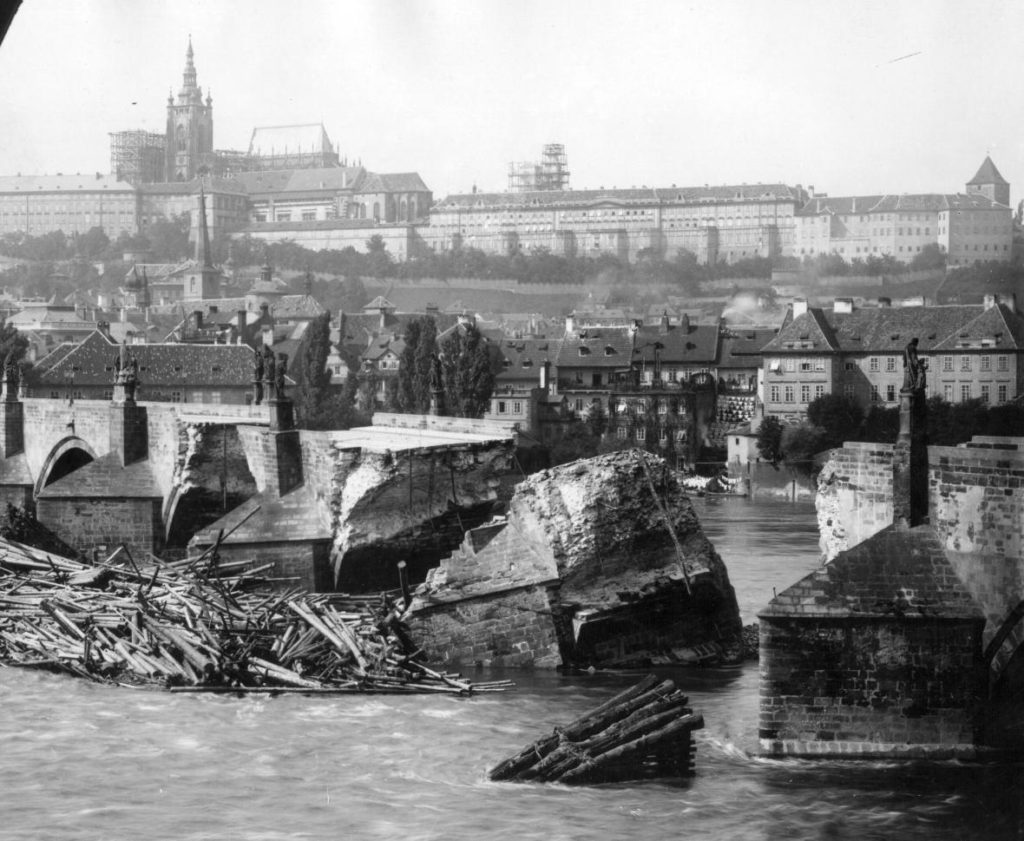
On September 4 at 5 am, two arches collapsed, and a third one fell four hours later. Two pillars were damaged due to flooding. The water did not recede until September 23. This was not the first time the bridge was badly damaged, but so far it has been the last, thanks to better flood control.
Newspaper accounts at the time, with some exaggeration, said that the only other comparable tragedy in Prague’s history was the National Theatre fire in August 1881, which completely destroyed the which destroyed the copper dome, the auditorium and stage. The theater had just opened in June. It was quickly rebuilt and opened again in 1883.
The collapsed section of Charles Bridge held two statues, both by Ferdinand Maxmilián Brokoff and dating to 1711.
The statue of St Francis Xavier was later replaced by a copy in 1913. The one of St Ignatius of Loyola was replaced in 1939 with a statue of of Saints Cyril and Methodius by Karel Dvořák. The original statues were retrieved from the river in 1901, and the statue St Ignatius of Loyola can be seen in the Lapidarium of the National Museum.
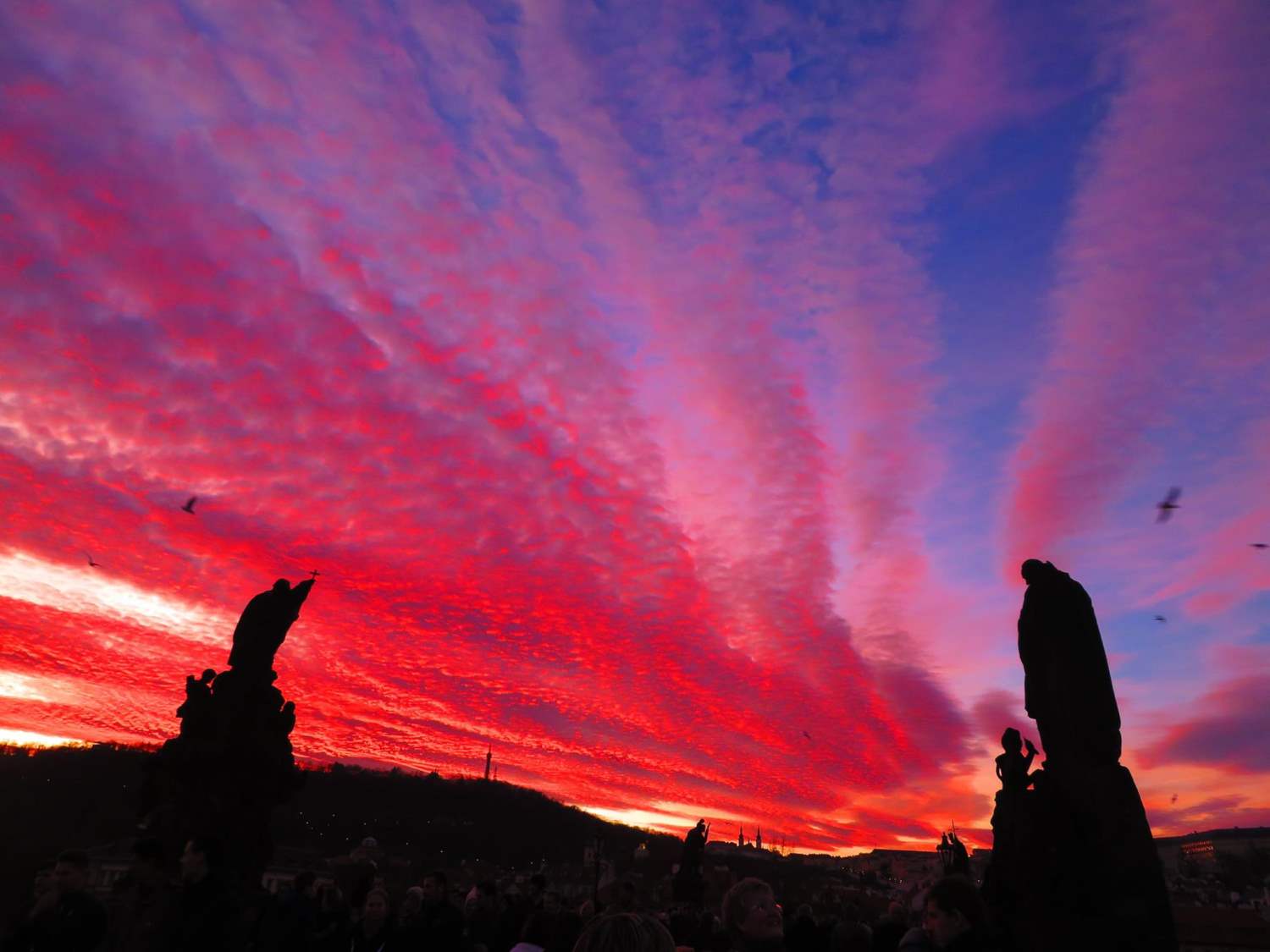
Repair work on the bridge lasted for two years and the bridge was reopened November 19, 1892, looking much as it had before tragedy struck.
But if it was not for the intervention of architect Josef Hlávka, the city’s biggest tourist attraction might no longer exist as we know it.
Hlávka lobbied for a reinforced version that resembled the original design as much as possible. Some other people saw an opportunity to modernize the bridge with wider stone arches that would let larger boats travel on the river, or with a completely new and modern design in the empty section.
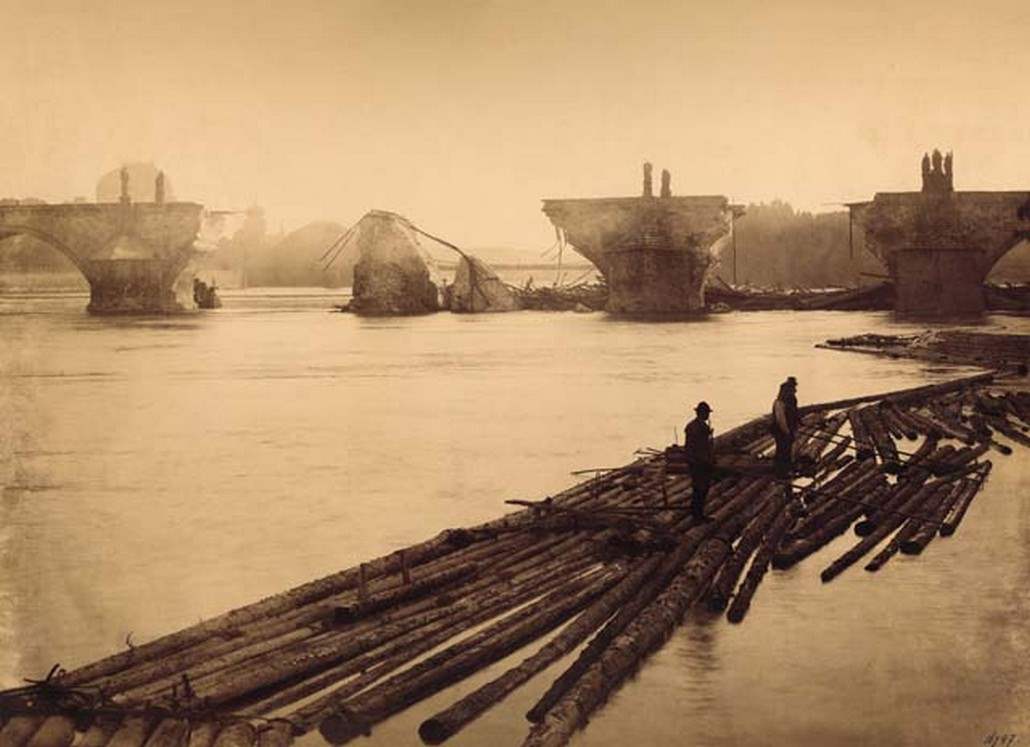
He showed that if the repairs were done properly, the remaining sections of the original bridge would be stable enough to support heavy traffic. Over the years since the bridge was built in the 14th century, the load it had to carry had increased substantially as Prague’s population increased.
Hlávka’s opinion swayed the day, and restoration took place in three phases. The first step was to make a temporary footbridge across the river, and assess why Charles Bridge partly collapsed.
The main reason for the collapse was a shallow foundation for the pillars. But they were not that fragile. Dynamite had to be used to remove the old stonework. Wooden underwater supports were replaces with steel sunk deep into the riverbed, a new technology at the time.
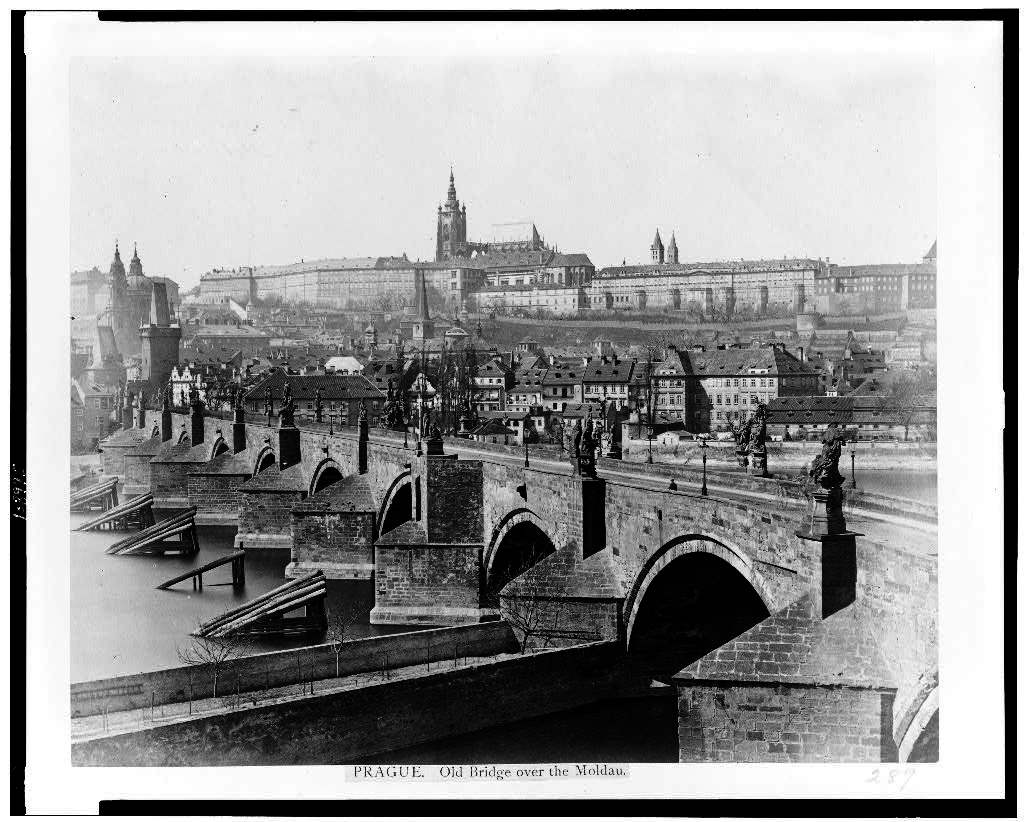
There were a few above-water modifications. The new pillars were slightly narrower and some modern engineering to the arches made the overall stricture lighter.
Once the plan was finalized, work proceeded quickly. A contractor was selected to do the main work, Gregersen Guilbrand of Budapest. Nationalists had wanted a Bohemian company, but Gregersen at the time was the most highly qualified bridge construction firm. The bridge restoration was completed on November 19, 1892. In 1902–04, the original pillars were strengthened at their foundations.
Hlávka is remembered for his philanthropy and building works, and the bridge Hlávkův most, connecting Karlín to Holešovice and crossing Štvanice island, is named in his honor. It opened in 1911.
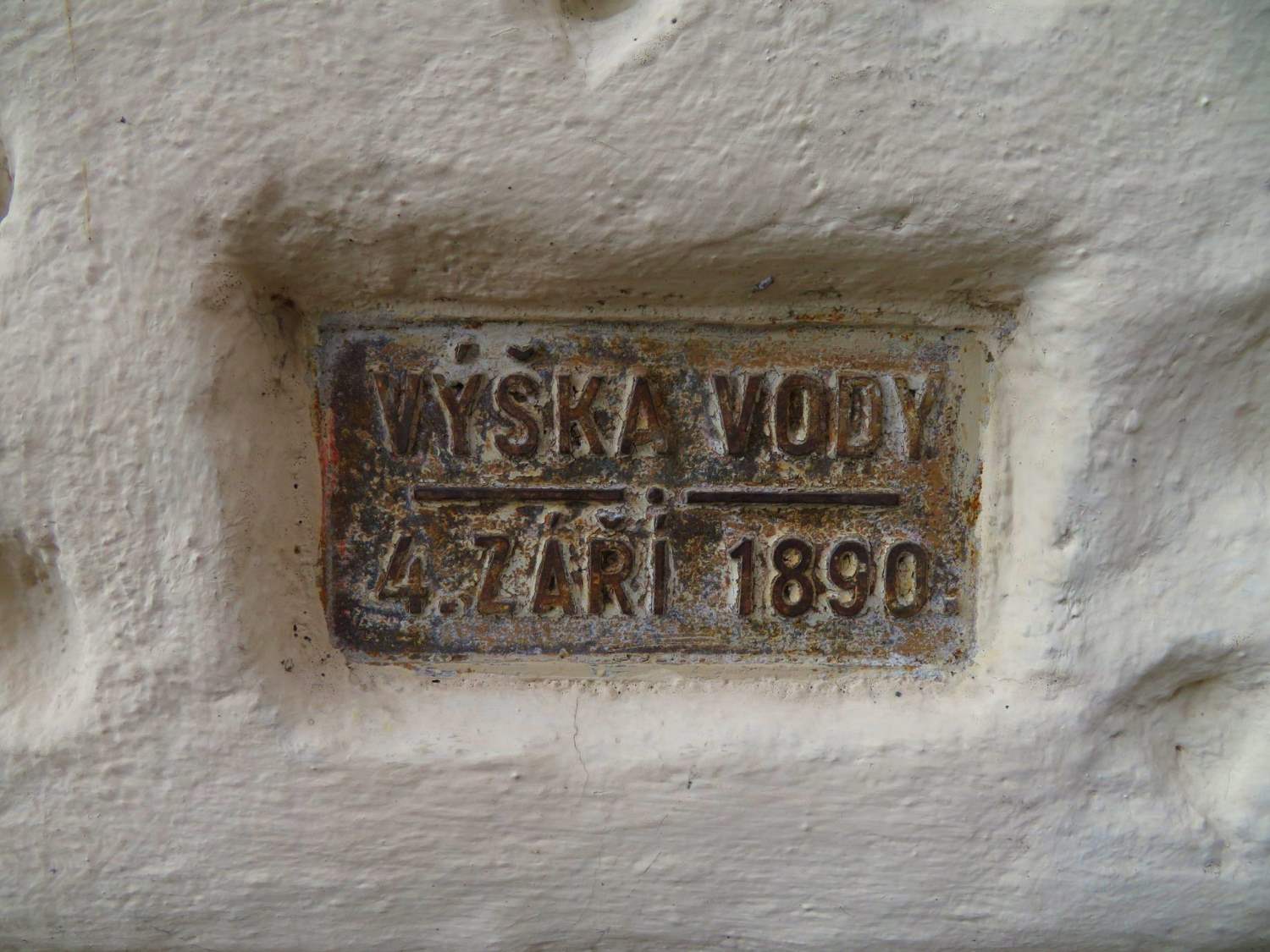
Charles Bridge also was also damaged in July 1432, when a flood demolished five bridge piers. It took until bridge 1503 for the bridge to be repaired. During the flood in February 1784 flood, six piers were damaged by wooden logs. Part of the pillar on which the military guard stood collapsed.
Due to to the repairs form all the floods over history and other renovations and restorations, very few of the stones in the bridge actually date back to the 14th century. The ones that do are darker and more eroded than the replacements.
Construction on Charles Bridge started in 1357 under the auspices of Emperor Charles IV. It was the only bridge across the river in Prague until 1841.
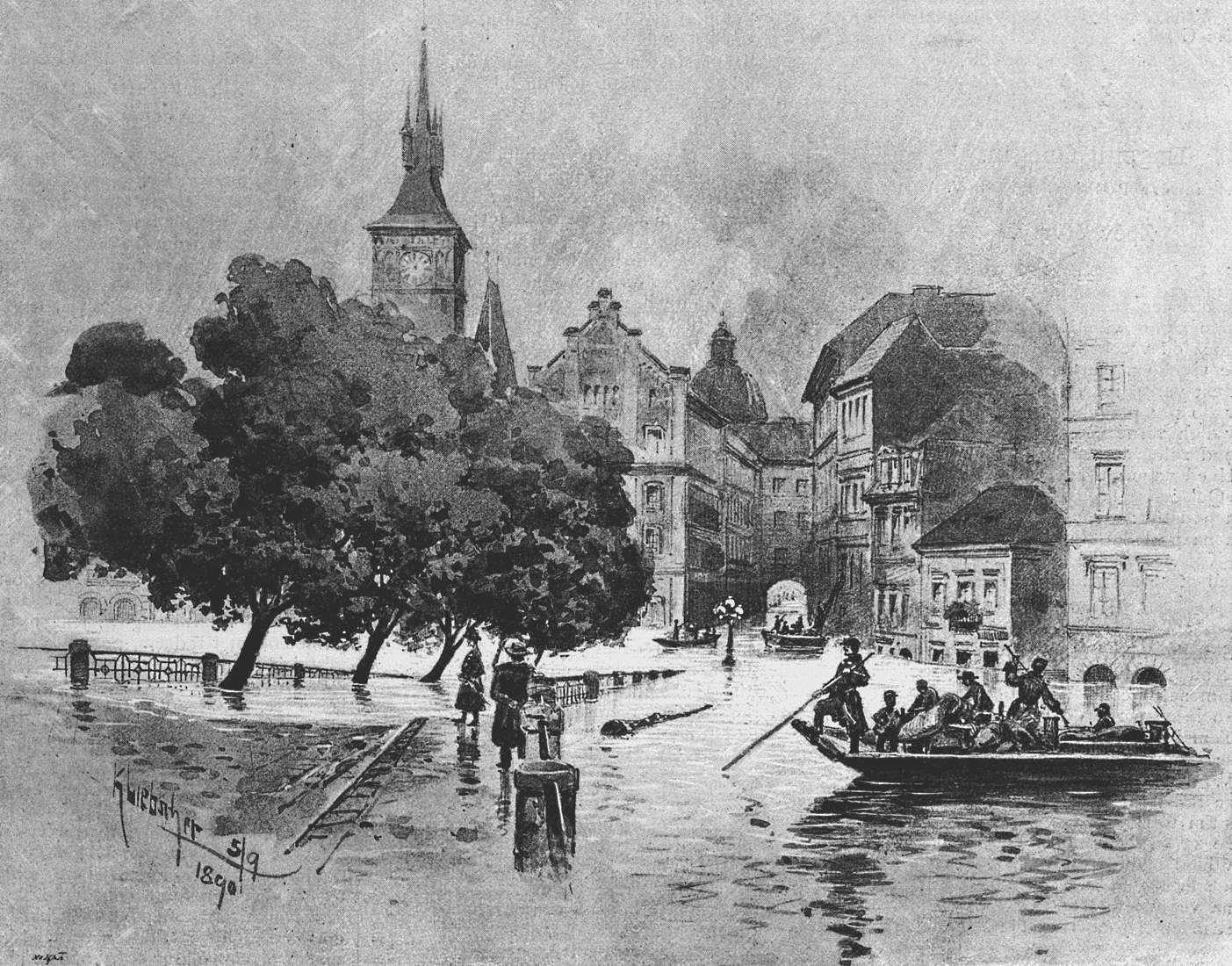
Charles Bridge underwent an extensive but controversial renovation in 2008–10. UNESCO’s World Heritage Committee criticized it for being poorly planned. The bridge is part of the city’s UNESCO’s World Heritage Site and is a protected landmark.
City Hall in February 2018 announced it would examine the state of the bridge’s stone blocks and, after replacing the ice guards, would make repairs to the 14th arch, which goes over Kampa on the Malá Strana side, where the joints between the stones are crumbling and there are some cracks. The ice guards were repaired between October 2019 and March 2020.
Then the rest of the arches will be repaired over the course of the next two decades. Each arch will cost 45 million to 60 million CZK to repair.












 Reading time: 4 minutes
Reading time: 4 minutes 